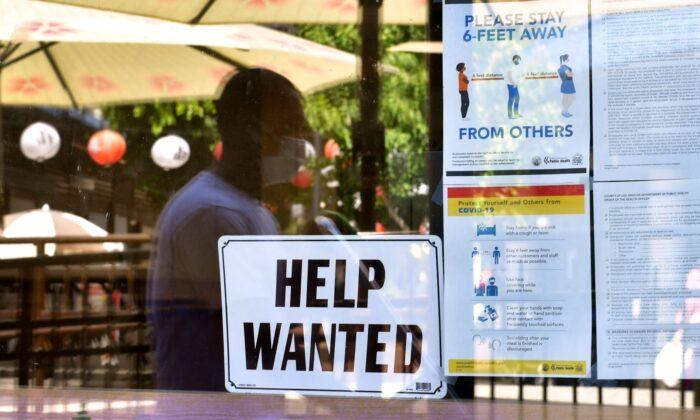Even as large corporations such as Target are posting forecast-beating earnings and reporting little difficulty attracting talent, smaller businesses say they’re struggling to hire workers, hurting their bottom line.
A new survey by Salesforce (
pdf) shows that 53.3 percent of small and medium-sized businesses said staffing issues have been a drag on revenues. For those businesses that said hiring woes were pressuring profits, 56.6 percent reported a hit to revenues of at least 11 percent.
Echoing this sentiment were small-business owners surveyed for the National Federation of Independent Business (NFIB)
July jobs report, which found that 49 percent of owners reported job openings that couldn’t be filled—a 48-year record high. At the same time, small-business owners’ plans to fill open positions remain at record high levels, and many are boosting wages to attract workers.
Finding qualified workers remains a key problem for small-business owners, with 93 percent of those who are trying to hire staff reporting few or no qualified applicants, according to the report, while the top overall concern among small-business owners was labor quality.
“Small business owners struggled to find qualified workers for their open positions, which has impaired business activity in the busy summer months,” NFIB Chief Economist Bill Dunkelberg said in a statement. “Owners are raising compensation to the highest levels in 48 years to attract needed employees.”
A separate NFIB
survey indicated that most small businesses said earnings trends over the past three months dropped by eight points to a net negative 13 percent. Among those reporting lower profits, 32 percent cited weaker sales, 31 percent indicated rising materials costs, and 10 percent blamed labor costs.
Large companies, by contrast, have been reporting forecast-beating earnings growth. Of the 91 percent of S&P 500-listed companies that have reported revenue numbers for the second quarter, 87 percent reported revenues above the mean estimate,
according to FactSet.
“The second quarter will mark the highest percentage of S&P 500 companies reporting revenues above estimates for a quarter since FactSet began tracking this metric in 2008,” John Butters, vice president and senior earnings analyst at FactSet, said in a statement.
Target, which is listed on the S&P 500, reported on Aug. 18 that second-quarter sales rose in every merchandise category, helping the company top earnings estimates.
Asked by Bloomberg whether Target was having a hard time finding workers to fill job vacancies, which have surged to a record high in the United States, the company’s chief financial officer replied in the negative.
“What we see as a company maybe won’t be what you hear everywhere else,” Target CFO Michael Fiddelke
told Bloomberg in an Aug. 18 interview.
“Our ability to attract team and our ability to retain team ... those numbers look strong for us right now,” said Fiddelke, who credited Target’s hiring power to a long-term investment strategy that puts a high priority on staff.
“That’s not a strategy that you can pivot to on a dime—it has to be part of your ethos as a company,” he said, adding that this “really benefits us in the current environment.”
Job openings in the United States
surged to a record high of 10.1 million in June, while hiring lagged behind that figure by more than 3 million, painting a picture of an economic recovery held back by hiring woes.
“This is by far the record amount of job openings the economy has ever had. This historically elevated level makes clear that we have a severe worker shortage that threatens what should be a prolonged economic boom,” Curtis Dubay, senior economist at the U.S. Chamber of Commerce, said
in a note.
Layoffs, meanwhile, remained at a record low for the second month in a row on the last business day in June,
according to the Labor Department’s most recent Job Openings and Labor Turnover Survey (JOLTS) report.





